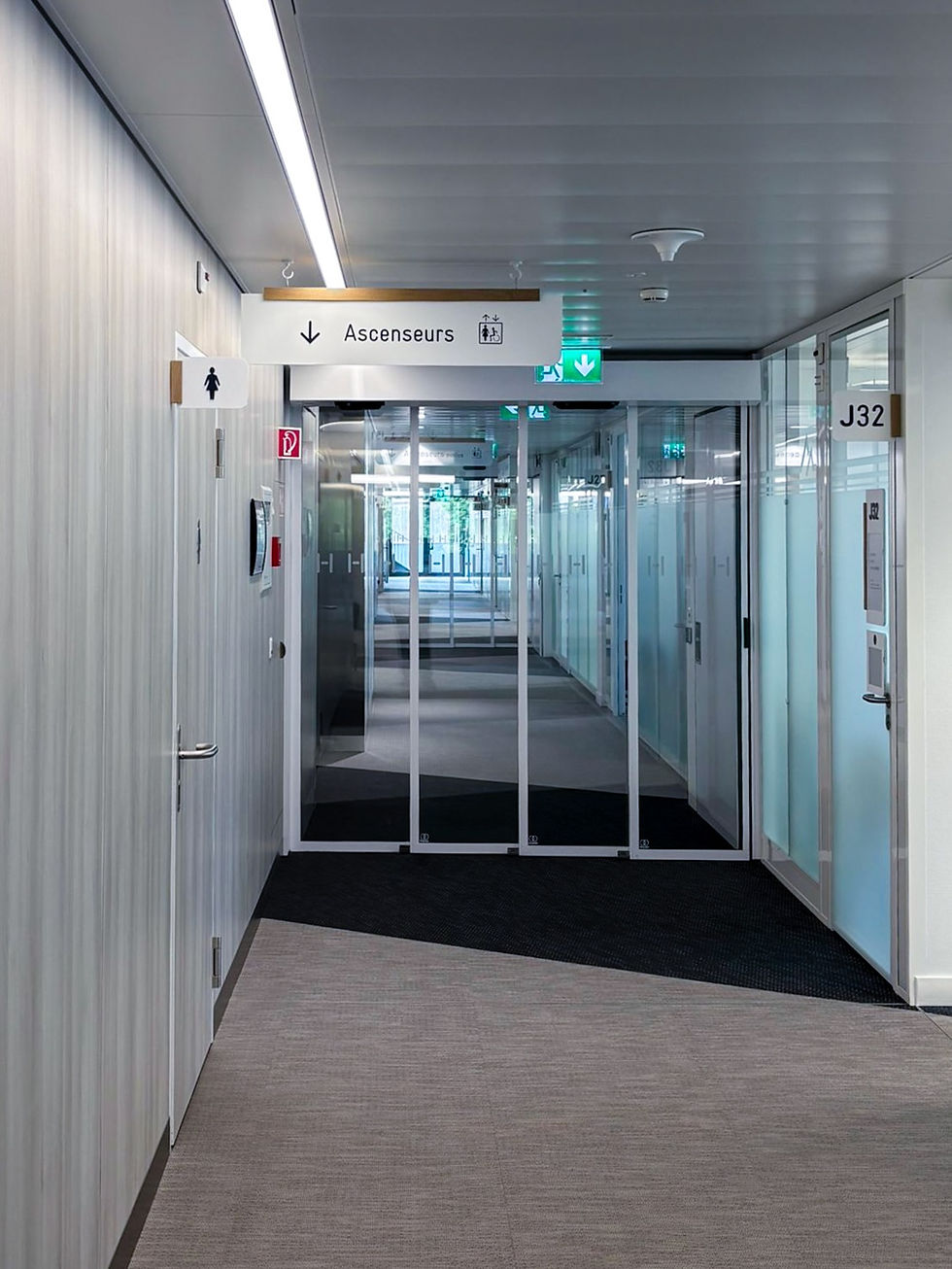

Creating clarity in a growing health precinct
Hôpital de La Tour is a major player in Geneva's health ecosystem. Located in Meyrin, near CERN, it combines emergency and intensive care, internal medicine, and advanced medical technology with a strong commitment to patient-centred care. With 190 beds, over 500 affiliated physicians and close to 1,000 staff, it supports thousands of patients annually and plays an important role in research and education.
To support its future growth, the hospital is developing a new health and innovation precinct—Campus Santé—which will bring care, research, and education together on one site by 2030. But to make that future work, the experience of getting around needed to change. Signage had become fragmented. Local fixes hadn’t addressed bigger system issues. Navigation didn’t reflect real user needs.

Project
Hôpital de La Tour
Client
Hôpital de La Tour
Collaborators
Location
Meyrin, Switzerland
Size
Project Build Cost
Focus
Wayfinding
User Experience
Evaluation
Testing & Research



Our Role
Humanics Collective was engaged to develop a campus-wide wayfinding strategy and addressing system. We looked at every journey—from public transport arrival to internal circulation—and worked closely with the hospital team to align the system with operational processes and patient pathways.
Our work focused on creating a logical, flexible system that:
supports access via car, public transport and foot
reflects real movement patterns and workflows
integrates into the built environment
supports accessibility and user diversity
aligns with the hospital’s identity and strategic goals
To test the system before a full rollout, we piloted it in one of the hospital's busiest zones. The pilot introduced a new addressing structure and prototype signage, and was evaluated through real-world observation.



Testing the impact
We assessed how patients, staff, and visitors moved through the space under normal and high-pressure conditions. We measured behavioural data alongside feedback, with strong results:
96% of users found the new directions clear and easy to follow
73% rated the signage as visible and legible
67% wanted the system extended throughout the hospital
Punctuality for consultations improved by 35%
Staff received 54% fewer requests for directions



Outcome
The pilot gave the hospital a tangible demonstration of what a smart, scalable wayfinding system could achieve. It also built confidence across departments and helped position wayfinding as an enabler of the hospital’s long-term vision.
The system will be rolled out as part of the upcoming campus redevelopment.






